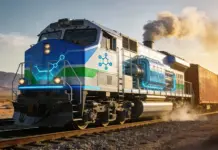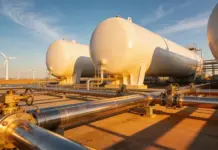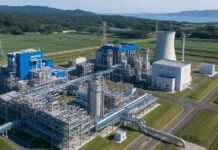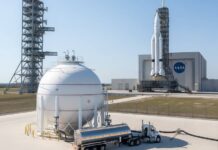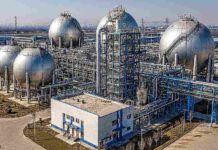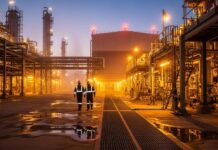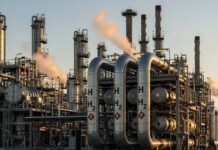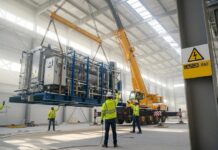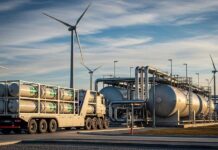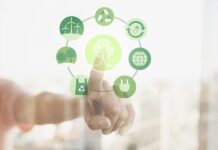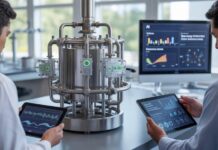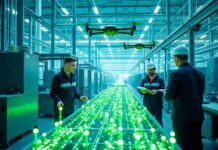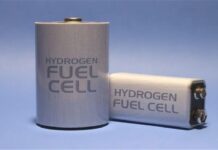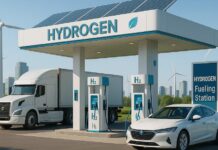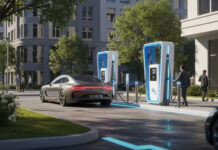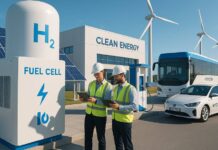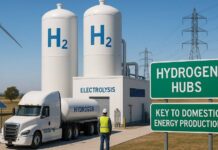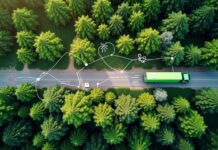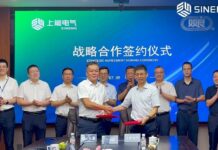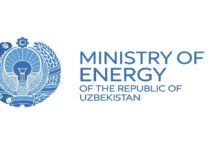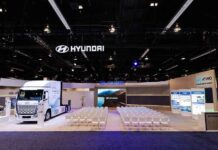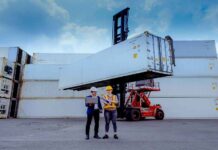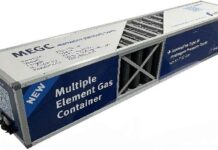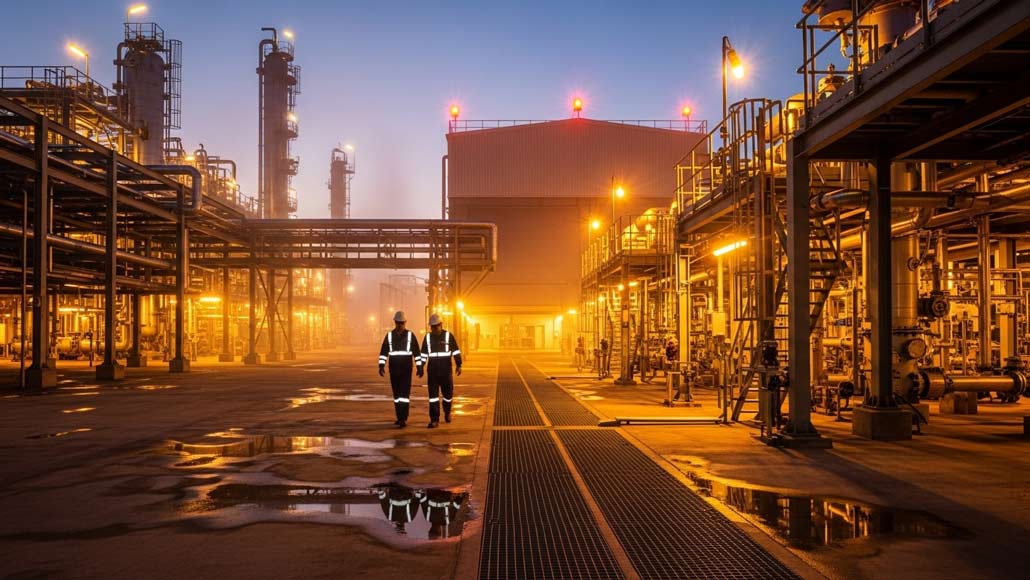The hydrogen economy in Europe is not just only about producing clean fuel, but it is more about producing it intelligently. As the continent scales up the hydrogen plants in order to meet its ambitious climate objectives, the integration of artificial intelligence and digital technology is indeed becoming indispensable. These tools are not just futuristic theories, but they are already reshaping the projects across the countries of Germany, Denmark, Finland, Spain, and more. Together, they go on to represent the next chapter of energy transition in Europe – hydrogen facilities that are not just green but also smart, economically resilient, and adaptive.
It is well to be noted that AI and digital twins are emerging as transformers as well as accelerators of hydrogen ambitions in Europe. AI is not just optimizing the production along with safety, but it also is supporting advanced materials research in order to get more efficient electrolyzers along with streamlining the supply chain logistics.
The intelligence engine for green hydrogen
Artificial intelligence, especially machine learning, is finding an increasing utility throughout the hydrogen value chain.
– Optimization of process – AI algorithms evaluate as well as fine-tune variables within electrolysis as well as chemical conversion by identifying optimal temperature, membrane conditions, and pressure. This enhances energy efficiency, decreases waste, and also maximizes the output of hydrogen.
– Dynamic energy integration – AI helps with real-time decision-making, since plants dynamically adopt renewable energy sources, such as solar and wind, into hydrogen production by smoothing the intermittency and also balancing the demands of the grid.
– Safety management – The volatility of hydrogen demands strict controls. AI-driven sensors, automated controls, and predictive analytics quickly detect the leaks, abnormal pressure trends, or even system failures, thereby decreasing the risks and helping with proactive interventions.
– Supply chain optimisation – Right from raw material sourcing when it comes to electrolyzer manufacturers to shipping as well as off-take analytics, artificial intelligence enables streamlining the supply chain, managing congestion, and also decreasing any kind of bottlenecks.
The growth of digital twins in the hydrogen ecosystem of Europe
Digital twins happen to be the virtual replicas of physical assets, which are designed in order to reflect real-world conditions in real time. When it comes to the hydrogen sector, they go on to serve as crucial platforms in order to predict plant behavior, model the electrolyzers’ performance, and also stress test infrastructure before they get rolled out. This kind of capacity in order to practice operations in a virtual way helps the operators to predict challenges and also find strategies long before the risks take place in the physical world.
What actually makes digital twins distinctly valuable for hydrogen production is their capacity in order to handle intricacies. Hydrogen plants in Europe go on to depend on various inputs: renewable energy availability, dynamics of the grid, feedstock expenditures, and demands, which are fluctuating. A digital twin goes on to integrate all these variables into an interactive model, thereby offering operators clear insights into how production can get optimized. All this helps in decision-making, making it more precise, faster, and rooted in hard data and not just assumption.
When it comes to Europe, where hydrogen infrastructure has to scale fast and, at the same time, maintain profitability along with safety, digital twins go on to act as invisible custodians of this shift. They go on to give the project developers the confidence within their investments, enable regulators to access the risks, and also offer utilities data-driven clarity that is required in order to operate facilities at their maximum efficiency. In short, they happen to be the digital backbone of the hydrogen future of Europe.
Artificial intelligence being the strategic brain
If digital twins are the mirror, AI happens to be the brain. While the twin reflects operational reality, artificial intelligence offers intelligence in order to learn from it, adapt, and also predict. By way of ingesting massive data sets from IOT sensors, electricity markets, as well as weather models, AI can anticipate how fluctuations within renewable energy supply are going to affect the production of hydrogen. This kind of predictive capacity makes sure that plants run when energy happens to be the cheapest and also clean, thereby securing economic as well as environmental benefits.
Beyond optimization, artificial intelligence also plays a very crucial role when it comes to predictive maintenance. Hydrogen electrolyzers happen to be sensitive machines – small faults in membranes, valves, or pumps can escalate into expensive disruptions. AI algorithms, which are trained on historical performance data, can flag certain early signs of wear and also recommend maintenance before breakdowns take place. This reduces the downtime, extends the equipment life, and also safeguards the investment returns, which is an invaluable advantage for the capital-intensive hydrogen projects across Europe.
Equity important happens to be the ability of artificial intelligence to orchestrate operations beyond the borders. With Europe looking out for a continent-wide hydrogen backbone, artificial intelligence systems can coordinate supply as well as demand in real time, thereby making sure of stability throughout the multiple plants as well as nations. This kind of level of coordination cannot be achieved in a manual way, and it requires intelligent automation, which adapts, learns, and consistently enhances.
Case studies throughout Europe
It is well to be noted that in Finland, the 3H2 hydrogen hub in Helsinki goes on to demonstrate how digital twins can speed up the project rollout. Before even a single electrolyzer was installed, the digital simulation tools of Siemens were used for virtual commissioning. This meant that the automation systems, production workflows, and safety protocols were tested in a digital way, thereby ironing out inefficiencies long before the plant was built. Such a kind of strategy decreases startup risks, dips expenditures, and also makes sure of a smoother path when it comes to commercial operations.
Apparently, Spain is also emerging as another hub of innovation. At one of the demonstration facilities in Catalonia, Eurecat is going ahead and leveraging the AI-driven digital twins in order to convert biogenic waste into hydrogen. By way of simulating plant performance under various configurations, the digital twin enables optimizing throughput, whereas the AI predicts the cost efficiencies along with production output. With this kind of capacity to process more than 2000 tonnes of waste every year into 400 tonnes of hydrogen, the project goes on to show how AI and twins can turn waste management into a massive climate solution.
Interestingly, Germany is advancing. Researchers at OFFIS are firing the digital twin software, which focuses on predictive maintenance when it comes to electrolyzers. Their model tracks components in real time, simulating how stress as well as temperature fluctuations go on to affect the performance. By way of blending AI forecasting, they help the plant operators to dynamically alter operations, boosting the hydrogen output when the electricity prices are low and scaling back when conditions become unfavorable. This kind of agility is exactly what the energy system of Europe needs to look into.
Why does all this matter to Europe?
The integration of AI along with digital twins is fundamentally reshaping the cost equation in terms of hydrogen for Europe. Historically, high production expenditures have been the Achilles’ heel of green hydrogen by way of slowing adoption, in spite of its benefits pertaining to climate. By way of enabling predictive maintenance, optimizing workflow, and also reducing the downtime, these technologies can actually lower the operational expenses by almost 15%. In certain mega projects worth billions, that translates into millions of euros in savings by making hydrogen financially a much more feasible option at scale.
It is well to be noted that safety happens to be yet another non-negotiable benefit. Hydrogen is a very volatile fuel, and mishandling It can have certain severe consequences. With AI-enabled tracking systems, which are embedded within the digital twins, plants can detect leaks, forecast any kind of equipment failures, and also respond in an instant way to irregularities. This kind of proactive approach not just safeguards the infrastructure but at the same time also strengthens the public trust in the hydrogen transition of Europe. The fact is that without safety, there can be no scale.
At the end of the day, scalability happens to be the true price. Europe is pursuing an interconnected hydrogen network by way of stretching from offshore wind hubs that are located in the North Sea to industrial clusters based in Germany, Italy, and Spain. In order to synchronize such a massive system, digital twins offer real-time visibility throughout the plants, while artificial intelligence makes sure that supply along with demand remains balanced. The result is a continent-wide infrastructure that is not just green but also intelligent, resilient, and available for the future.
Going forward, the strategic advantage of Europe
It is well to be noted that Europe is already investing in large-scale digital twin initiatives that go beyond energy. The destination Earth – the DestinE program, for instance, is building a digital twin of the entire planet in order to model climate change along with policy scenarios. Lessons from such a high-precision model are directly going to be an advantage for the hydrogen sector, where, along with weather, resource forecasting is crucial. By way of aligning industrial strategy along with digital innovation, the fact is that the hydrogen plants in europe are way ahead of global competitors.
The GenAI4EU Initiative by Horizon Europe also underscores the intent of the EU to fuse generative AI along with industrial applications, which includes hydrogen. By way of creating digital twins that are enhanced due to generative AI, Europe can stimulate intricately planned behaviors, automate the decision-making process, and also design completely new infrastructure models. This kind of convergence of AI along with engineering is not just futuristic but also under development, therefore positioning Europe right at the forefront of industrial intelligence.
What goes on to emerge is a very distinct strategic benefit. While there are other regions that may invest quite heavily in hydrogen capacity, Europe is investing in hydrogen intelligence. Through embedding AI and digital twins, the continent makes sure that its projects are not just green but also efficient and safe, as well as globally very competitive. In a market that is soon going to be worth hundreds of billions, this kind of difference is easily going to define the leadership.
In the end
It is worth noting that artificial intelligence and digital wins are no longer choice add-ons when it comes to hydrogen plants in Europe. They have actually become the foundational pillars of the sector. Reducing the expenditures, enhancing the safety, and also helping scalability, these technologies are actually transforming the static facilities into dynamic and learning ecosystems. For Europe, this happens to represent more than just a technological upgrade, but it is a cultural continuation of blending its heritage with innovation.
As Europe races towards net zero, its hydrogen plants are not simply going to be measured in terms of megabytes or tons of output, but they will be measured in intelligence by the capacity to adapt, anticipate, and also operate in harmony with the broader energy systems of the continent. In this fusion of AI as well as digital twins, Europe is not just producing hydrogen, but it is also coming up with a blueprint for a safer, smarter, and also more sustainable future of energy.

